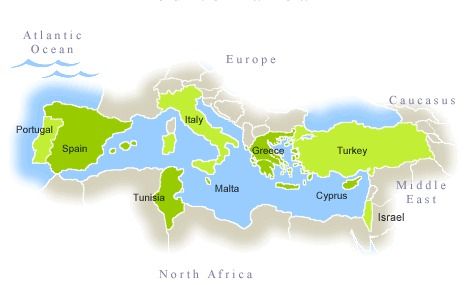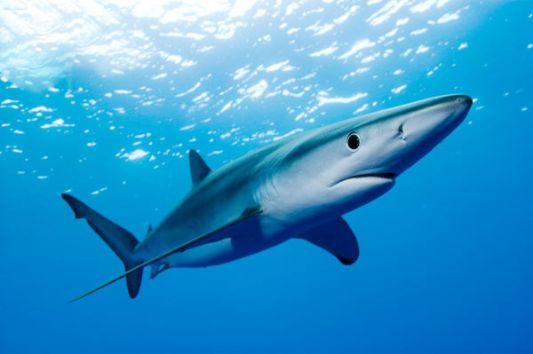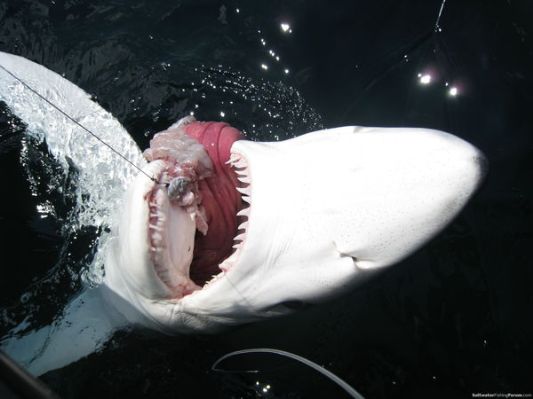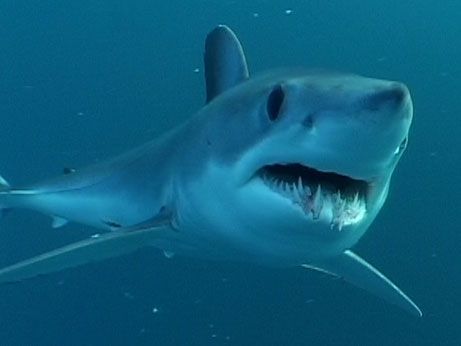
On Sunday we decided to go out for the day to the beach with the kids, every thing was running as usual but later in the afternoon just after having lunch and fighting with my mobile phone to try and follow the coverage of the Wimbledon final but to no avail we saw a speed boat racing up and down the beach. We were at Port Saplaya beach in Valencia and as there is a small marina there it wasn’t that unusual until we realised they were waving at the bathers ushering them out of the water, at the same time a couple of life guards were running along the shore calling all the bathers out of the sea. Immediately I looked for my 8 year old daughter who was wading along the shore and called to her, she too had noticed all the fuss and was incredibly intrigued by all the commotion. Within the space of about 15 minutes there was absolutely no one in the water, a very surreal sight this time of year. I figured it must have been a large bank of jellyfish that had been washed up with the tide but far from it, the guilty party was a school of sharks that had come into shore! I bet everyone’s thinking sharks? I thought the same thing! I knew there were sharks in the Mediterranean but the only time I have ever seen any was off the coast of Turkey, off the coast of Valencia the only threat I had ever come across in all my years in Spain were jellyfish so this was suddenly getting quite interesting and questions were arising what type of shark would they be and how big were they….
Now, I am not very knowledgeable on sharks and I could name probably about 5 or 6 different species of them and that’s about it so I was curious to find out more information. We went to talk to the life guard, who told us that a school of Tintorera Sharks had swum past their boat and were moving parallel to the shore. That name wasn’t in my list of five, but I had heard of it before even though I had never seen one, in English they are called Blue Sharks. Apparently they are quite common in the Mediterranean and potentially dangerous. He continued to tell us that they averaged 1,5m in length, which sounded pretty healthy to me so we decided to stay out of the water, by this time my daughter was really excited at the thought of spotting a real life shark and guess what every five minutes she spotted dorsal fins in the water, or what she thought or believed to be dorsal fins! Daddy did you see that? There’s another one! The way she reacted you would have thought it was a great white! I was thinking to myself, would I ever get her back in the water after this? Well not today I wouldn’t. However I was underestimating this species of Shark thinking it was just a big fish!

BLUE SHARK

ADULT BLUE SHARK'S MOUTH!
The afternoon elapsed and we eventually went home without having stepped foot in the water since the alert, well that’s not entirely true, I tried to go for a quick dip in shallow water but my daughter nearly had a heart attack thinking I would be dragged out to see by some sea monster, so that mission was aborted abruptly.
When I got home I decided to investigate a little as sharks aren’t necessarily a species you associate with the Mediterranean Sea, dolphins yes, but sharks? I have never heard of a shark attack in the Med before, but given the climatic conditions and a plentiful food source, it should be thriving with them although they are never talked about. I discovered that the Med is in fact home to many sharks. Seldom seen, and even more seldom coming close to people, they are there, but in ever-decreasing numbers as they are being fished to extinction. The Mediterranean Sea is a huge sea spanning a massive 965.000 square miles, and its warm waters are home to at least 47 different species of shark, at least 15 of which could be dangerous to humans. That I didn’t know!
Yet despite millions of people using its 28,600 miles of coastline every year, there have been very few reported Mediterranean shark attacks, and fewer deaths.
Some of the waters in the Mediterranean reach a depth of over 15,000 feet although the average depth is just 4,000 feet. With very saline, warm waters and little tidal movement, the Mediterranean Sea is home to an abundance of sea creatures, giving the sharks plenty of food to live off.
In the straits of Gibraltar, the Mediterranean Sea opens into the vast Atlantic Ocean, and offers a migratory path for many open sea sharks to cross the ocean to the USA, which some species of sharks do unfailingly every year, returning to the deep waters of the Mediterranean to hatch their young as do the Bluefin Tuna from the North Atlantic.
Many sharks in the Mediterranean are virtually never seen and so pose no danger to water users, but their presence means that bathers and other users of water sports should always be on the lookout for them.
The three most dangerous sharks on the planet are believed to be present in the Mediterranean:
The Great white Shark (Carcharodon carcharias) - confirmed
The Tiger Shark (Galeocerdo cuvier) - though its presence has not been confirmed.
The Bull Shark ( Carcharhinus leucas) - again its presence is suspected but not confirmed.
However, there are many other dangerous sharks in the Mediterranean including:
Blacktip sharks (Carcharhinus limbatus)
Smooth Hammerhead Sharks (Sphyrna zygaena)
Scalloped Hammerhead Sharks (Sphyrna lewini)
Great Hammerhead Sharks (Sphyrna mokarran)
Short Fin Mako Sharks (Isurus oxyrinchus)
 Mako Shark
Mako Shark
Grey nurse or sandtiger sharks (Carcharias taurus)
Sandbar Sharks (Carcharhinus plumbeus)
Spinner Sharks (Carcharhinus brevipinna)
Copper Sharks (Carcharhinus brachyurus)
Blue Sharks ( Prionace glauca ) – our newly made friends!
Sharp-nose Sevengill Sharks (Heptranchias perlo)
Oceanic Whitetip (Carcharhinus longimanus)
Only the big three mentioned above - the white, bull and tiger shark have teeth designed for tearing.

Great white caught in the Med
Other sharks' teeth are designed for gripping, and so are less likely to cause fatal wounds. Most sharks only bite humans to check out what they are. Great Whites are notorious for this, but because of their size, that one bite can be fatal or cause serious damage. Many smaller sharks will bite only when caught up in fishermen's nets or on lines. Even little sharks have powerful teeth and so all should be treated with the utmost caution at all times.
So there you have it…. The majority of them are harmless but could you tell the difference? I couldn’t!
Happy Swimmimg! 